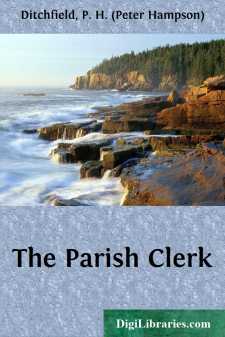Categories
- Antiques & Collectibles 13
- Architecture 36
- Art 48
- Bibles 22
- Biography & Autobiography 813
- Body, Mind & Spirit 142
- Business & Economics 28
- Children's Books 15
- Children's Fiction 12
- Computers 4
- Cooking 94
- Crafts & Hobbies 4
- Drama 346
- Education 46
- Family & Relationships 57
- Fiction 11828
- Games 19
- Gardening 17
- Health & Fitness 34
- History 1377
- House & Home 1
- Humor 147
- Juvenile Fiction 1873
- Juvenile Nonfiction 202
- Language Arts & Disciplines 88
- Law 16
- Literary Collections 686
- Literary Criticism 179
- Mathematics 13
- Medical 41
- Music 40
- Nature 179
- Non-Classifiable 1768
- Performing Arts 7
- Periodicals 1453
- Philosophy 64
- Photography 2
- Poetry 896
- Political Science 203
- Psychology 42
- Reference 154
- Religion 513
- Science 126
- Self-Help 84
- Social Science 81
- Sports & Recreation 34
- Study Aids 3
- Technology & Engineering 59
- Transportation 23
- Travel 463
- True Crime 29
Memorials of Old London Volume I
Description:
Excerpt
I.—Celtic London
When we see the words "Celtic London" at the head of a chapter we naturally feel inclined to ask, "Was there such a place? Was there any Celtic London?" Although it is almost impossible to answer such a question by either "yes" or "no," it may be worth while to examine it briefly before passing on to the domains of authentic history.
In the first place, there must have been some gathering of huts or houses, some aggregation of residences, to which a name could be applied, and it must have been important enough to retain its name after the Romans came—nay, to retain it even in spite of an attempt on their part to change it.
But though we must accept the existence of a London in the old obscure period when something very like modern Welsh was the language of the south-eastern part of Britain, and though we know that London was situated on a river which also had a Welsh name, we do not know directly on which side of that river it stood, and have nothing for it but to apply to the problem what a great authority has described as an historical imagination, and try if we can find a sufficient number of geographical or topographical facts to reduce the problematic side of the questions involved; and so to leave certain points, certain pedestals, so to speak, of firm ground on which we may place the foundations of the greatest city the world has seen.
Our first facts are meagre enough. We have three words; no more. They are Lon, don, and Thames. We are like the Oriental lady in the legend of St. Thomas of Canterbury. She knew but two words of English—Gilbert and London. We know three words, and, keeping them in our minds, wander down the Thames till we find the place to which we can fit the other two words. But, first, we must make an attempt to translate them into modern English. The Welsh Lynn is pronounced lunn. Dun, or down, has passed into English. Thame, or thames, occurs in many parts of England, everywhere denoting the same thing, and, according to most authorities, being practically the same as the English word tame. The name of the Tamar will occur to the mind as well as Thame. In the case of the Thames, the name may very well have come over from the Continent with the early traders—the Angles, for instance, or the Danes—and have thus passed into British use. A great authority, Mr. Bradley, is said to have mentioned that Lynn in London may be a personal name. The ordinary interpretation is so simple that it seems hardly worth while—unphilosophical, in fact—to search for another. Lynn, pronounced Lunn, is a lake. Dun is a down or hill. London, as the first syllable may be taken adjectively, will mean the Lake Hill. Where, then, is the hill which stands by a lake?
If we consult a map which includes the lower Thames, and has the levels clearly marked or contoured, and follow the coast line from, say, Kew Bridge, we come to no higher ground for more than six miles, the surface varying from one foot above the ordnance datum of high water to seven....







